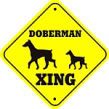 |
Reptile Forum, Reptile Classifieds - CaptiveBred
A site to share your Reptile experiances & ask questions
|
| View previous topic :: View next topic |
| Author |
Message |
Mike
Contributing Member
Joined: 28 Mar 2006
Posts: 139
|
 Posted: Thu Sep 28, 2006 9:50 pm Post subject: Vranus glauerti sexual dimorphism Posted: Thu Sep 28, 2006 9:50 pm Post subject: Vranus glauerti sexual dimorphism |
 |
|
Hi!
I was wondering can you see the the difference in postcloacal scales in young glauertis. I've been reading Sam Sweets Spatial Ecology of Varanus glauerti......
Since the drawing indicates adult animals, has someone taken any shots of real young ones?
would be realy interesting to see cause I'm on my way of getting some.
Sam?
Scott?
regards
/Mike |
|
| Back to top |
|
 |
Sam Sweet
Contributing Member
Joined: 30 Aug 2006
Posts: 69
|
 Posted: Fri Sep 29, 2006 6:04 am Post subject: Posted: Fri Sep 29, 2006 6:04 am Post subject: |
 |
|
I can't give you a solid answer Mike, since I don't keep glauerti and haven't seen juvvies grow up to known-sex animals. What I can say is that even recent hatchlings have different numbers of postcloacal scales, and those with more are most likely males. The color differences I reported don't show up until the animals are maturing, and differences in scale size increase around then too. My advice, if you have several hatchlings to choose from and want a pair, is to grab the two with the highest and lowest numbers of postcloacal scales.
Some folks claim you can sex glauerti by color and spotting pattern on the thighs, and that could be true for the captive population. It isn't true for the species as a whole. |
|
| Back to top |
|
 |
Scott W
Site Admin

Joined: 15 Apr 2004
Posts: 13355
Location: London, England.
|
 Posted: Fri Sep 29, 2006 7:51 am Post subject: Posted: Fri Sep 29, 2006 7:51 am Post subject: |
 |
|
Interesting Mike / Sam. I've not read your paper but I have been told of certain breeders that can sex glauerti & pilbarensis straight out of the egg!
(may explain the high number of male pilbarensis I have  ) )
I have reared to maturity 12 glauerti but unfornately I didn't really try to sex them until they were adults. So I have no idea if there was any differences between them (I'm sure there must be something).
I think your post above Sam makes sense, it's always nice to have a big group of hatchlings to choose your stock from.
_________________

Please DO NOT pm orders for reptiles, send email instead scott@captivebred.co.uk |
|
| Back to top |
|
 |
Mike
Contributing Member
Joined: 28 Mar 2006
Posts: 139
|
 Posted: Fri Sep 29, 2006 12:18 pm Post subject: Posted: Fri Sep 29, 2006 12:18 pm Post subject: |
 |
|
Anyhow I will take pics of the scales from the one I'll buy. It could be helpfull in the future.
I will go on the counting of the scales and try to get 1.2 hopefully.
regards
Mike |
|
| Back to top |
|
 |
Mike
Contributing Member
Joined: 28 Mar 2006
Posts: 139
|
 Posted: Fri Sep 29, 2006 1:19 pm Post subject: Posted: Fri Sep 29, 2006 1:19 pm Post subject: |
 |
|
Thanks guys!
/ Mike |
|
| Back to top |
|
 |
arborgoanna
Contributing Member

Joined: 30 Nov 2005
Posts: 128
|
 Posted: Fri Sep 29, 2006 11:45 pm Post subject: Posted: Fri Sep 29, 2006 11:45 pm Post subject: |
 |
|
While scale variation may aid in distinguishing between the sexes in V. glauerti and other Odatria, I have found another reliable method for sexing most varanids (excluding Papusaurus, Polydaedelus, and Psammosaurus), which has worked in most situations.
From the many specimens I have looked at, cared for, and photographs, I have been able to notice specific patterns and trends between the different sexes. The most reliable method that I have come to use is the shape and diameter of the dentary bone (lower jawbone). In males, the lower jaw bone is thicker in diameter and is usually curved/bent back at an angle, when tracing the jawbone from the tip of the snout back to the ear. In females, the contour of the jawbone from the snout tip to the ear is much more linear, and rarely has a noticeable curve or angle to it.
While obviously not a V. glauerti, or an Odatria for that matter, the same conditions used to sex these V. macraei hold for many Odatria species (and all other subgenera excluding the ones listed above). Males will have a more pronounced curve to their dentary bone, whereas females will typically not.
 |
|
| Back to top |
|
 |
|
|
You cannot post new topics in this forum
You cannot reply to topics in this forum
You cannot edit your posts in this forum
You cannot delete your posts in this forum
You cannot vote in polls in this forum
|
Powered by phpBB © 2001, 2005 phpBB Group
|





